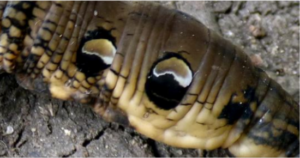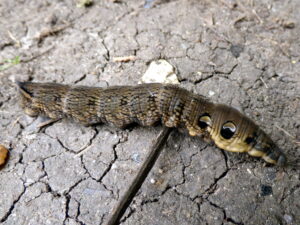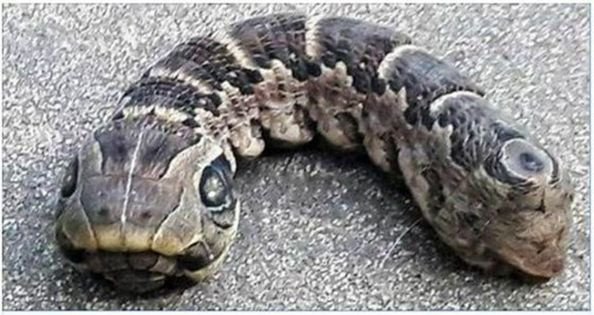In the peaceful town of Santa Fe, Argentina, 46-year-old Lujan Eroles experienced quite a surprise when she found an unusual creature in her garden.
At first glance, she thought it was a snake, but it was actually a wonderful example of nature’s mimicry – a 10-centimeter-long creature that looked like a small serpent!
This discovery left Eroles and her neighbors both amazed and curious, prompting conversations about this strange find. Eroles described her experience, saying she was startled and screamed when she saw it.

The bizarre creature, which had snake-like features and unusual eyes, drew the attention of her neighbors, who gathered to see the surprising sight for themselves.
Eroles was so astonished that she told National Geographic, “I have never seen anything like it. It was just like a snake, and its eyes were so strange.”
“When I looked down and saw the strange animal, I was fearful, thinking it might be poisonous,” she added.
“We all thought it was a mutant animal, so we filmed it and put it online for others to help us identify it.”

The creature looked like a snake, but with odd eyes that made her fear it could be venomous. Realizing this was not an everyday find, Eroles decided to seek answers and share her encounter. She uploaded a video of the extraordinary caterpillar online.
The video quickly captured the public’s attention, leading to discussions and speculations about its identity. The snake-like appearance and its small size intrigued online viewers, contributing to discoveries about its true nature.
Experts and enthusiasts soon chimed in on the video. They identified the mystery creature as a caterpillar from a rare moth species native to Central America. The caterpillar, known as an Elephant Hawk-Moth Caterpillar, has a fascinating defense mechanism: it mimics the look of a snake to scare off predators.
It features two large “eye markings” just behind its head that create an illusion of a bigger, more intimidating creature.

This snake-like caterpillar doesn’t have the usual defenses like venom or a strong shell. Instead, it uses mimicry as a clever way to survive. By looking like a snake, an animal often associated with danger and poison, it convinces predators to leave it alone. This evolutionary trick highlights the fantastic ingenuity of nature’s survival tactics.
Lujan Eroles’ unexpected discovery not only fascinated her and her neighbors, but it also highlighted the incredible biodiversity of our planet. This caterpillar’s unique mimicry shines a light on the complex and clever strategies creatures use to stay safe in the wild.
What did you think about this unique and amazing creature? Feel free to share your thoughts in the comments!




